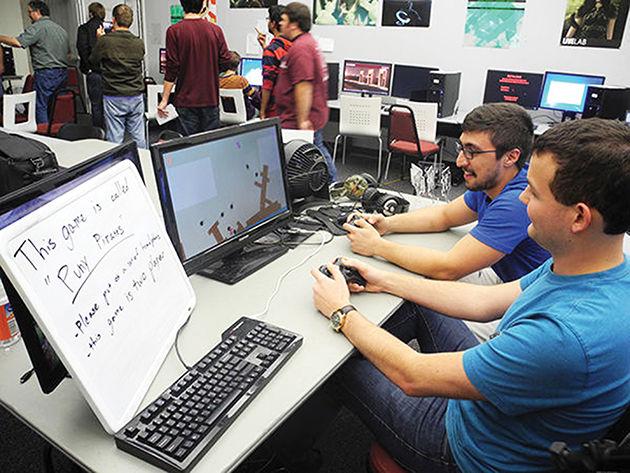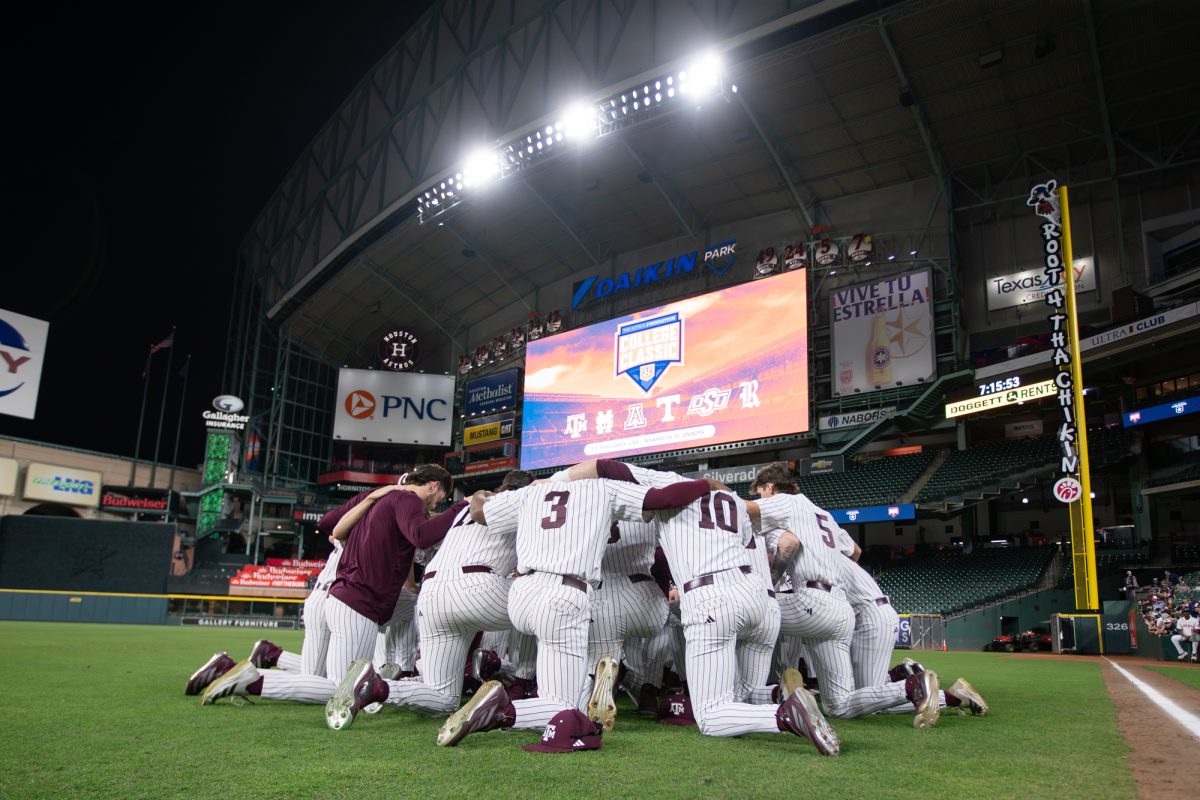Video games take a studio staff years to create, but this weekend, students will have just two days to design and implement their own as part of Texas A&M’s second annual game jam.
A game jam is a competition that brings together game enthusiasts, artists and programmers to see who can create the best video game related to a chosen theme in 48 hours. Participants in the “Chillennium Game Jam” can work alone or in teams of up to four people.
Andre Thomas, lecturer in the department of visualization and founder of the interactive visualization lab called LIVE Lab, has more than 20 years of experience with computer graphics and computer generated imagery and is one of the leading forces behind this year’s game jam along with Cameron Coker, visualization graduate student.
Coker, who has previously been a part of game jams, said a game jam’s appeal stems from the fun, chaotic competitiveness the event creates.
“Game jams force artists, designers and programmers to build something that’s both fun and functional in just a few days,” Coker said. “That small time frame strips the game
development process down to a few basic components — creativity, teamwork, hard work.”
Michael Bruner, a visualization junior who participated in last year’s game jam, said the time frame of the competition makes the task difficult.
“The time constraints are probably the most challenging, especially when you’re trying to get [programming] bugs out at the end,” Bruner said.
Coker said mentors from the gaming industry will offer help and advice to participants during the competition.
“This year’s theme was chosen through submissions by the organizers of [Chillennium], and is being kept secret until the start of the event, creating the element of surprise for the gamers,” Coker said.
Coker said this year’s prizes include merchandise from DreamWorks Studios, Gearbox — the makers of the video games Borderlands and Homeworld — and commercial software licenses. Coker said the judging process consists of sponsors, children, staffers and a team of industry professionals who will try out each game.
Games are judged in four categories — art, design, sound and programming. Awards are given out in each category as well as first, second and third for “Best Overall Game.”
Coker said just as museum outings are important for aspiring artists, so are game jams for student game developers.
“Game Jams provide opportunities for beginners to collaborate and learn in a fun, welcoming environment while providing an outlet for veterans who want to test their skill in an organized competition or simply try out some of their wilder ideas,” Coker said.
Justin Bloomer, visualization senior and game jam newcomer, said game jams are becoming more popular among college students.
“My friends who participated last year told me about it, and it seemed like something I could do,” Bloomer said. “After the success that last year’s first game jam brought — a total of 40 students participated, some of whom came from Kansas State University — the creators behind TAMU’s game jam have hopes that in the future A&M will be able to host the biggest game jam in the Americas.”
The game jam, which is run by A&M’s LIVE Lab, will begin at 5 p.m. Friday and end 5 p.m. Sunday at the Thomas G. Hildebrand Equine Complex.
Competition challenges programmers to design video game in 48 hours
October 21, 2015
Photo by File
Game Jam
0
Donate to The Battalion
$2065
$5000
Contributed
Our Goal
Your donation will support the student journalists of Texas A&M University - College Station. Your contribution will allow us to purchase equipment and cover our annual website hosting costs, in addition to paying freelance staffers for their work, travel costs for coverage and more!










